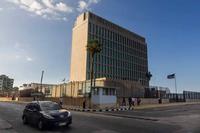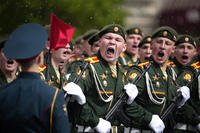FORT LAUDERDALE, Fla. -- The Army's top officer said his service must "fundamentally change the way it does business" as the Army looks to cut up to 13 brigade combat teams and prepare for the five-year 80,000 soldier drawdown.
Army Chief of Staff Gen. Raymond Odierno told the crowd Friday at the Association of the U.S. Army's Winter Symposium here that U.S. Training and Doctrine Command is close to completing an "aggressive and extensive analysis of the brigade combat team design."
The Army already announced it will cut eight BCTs, but that number could grow to 13 if the service follows through with plans to go from two to three maneuver battalions and adding more engineers to each brigade, Odierno said. Service leaders will deliver their recommendations to Army Secretary John McHugh based on TRADOC's study in the next few months.
"The early feedback clearly indicates that significant flexibility and capability would be gained by adding a third maneuver battalion and more engineers to our brigade combat teams. If a decision is made to add a third maneuver battalion and engineers it would cause us to reduce further our brigade combat teams from the planned number of 37 down to perhaps 32 or 33 brigade combat teams in the active component," Odierno said.
Service leaders have announced the Army will retire the Germany-based 170th and 172nd Infantry Brigades. Odierno said the service is still discussing what other brigades will go away.
The Army will not scrap the "modularity" gained from the establishment of the BCT structure in recent years as part of this review, the Army chief of staff said.
"Modularity has served our Army very well and we will not walk away from it, however, we now have time to discuss and recommend changes to our brigade combat team organization and the execution and oversight of the modular brigades. It is critical that this vital war fighting formation remain dominant against the evolving hybrid threats in evolving operational environments," Odierno said.
The reduction in the force, though, has led Army leaders to re-evaluate the amount of logistics capabilities the service can dedicate to each BCT.
"When we developed the modular brigade the assumption was made that everyone was going to have to operate independently of every other brigade so because of that we built a lot of logistics capability into each brigade so we are reviewing that to make sure that concept is right," Odierno said.
Adding a third battalion will provide flexible to adapt to hybrid threats such as a complex, high-end war in Korea down to a training mission in Africa. These new brigade models must allow commanders to adapt, especially once the Army executes plans to regionally align brigades.
"What we want is a brigade that can be flexible enough to fight a very complex war in Korea. We want a brigade that can do the training and advising. And I think with the third battalion being added will provide flexibility for that brigade to do a wide variety of missions," Odierno said.








